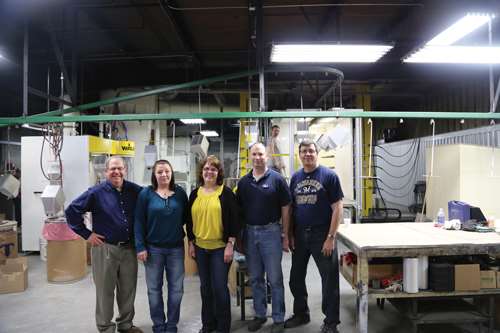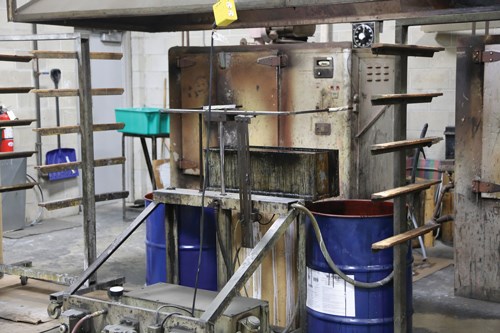“I am from OSHA, and I am here to help you.”
Hearing that line is certainly enough to send shudders down the spine of any facility manager. I speak from personal experience: my company went through an inspection by the Occupational Safety and Health Administration within the past year.
It certainly was not welcome, but, truth be told, while there was some pain, there were also many lessons learned. Our work environment became safer through the process, and we gained a lot of knowledge on how to minimize the possibility of a future inspection.
OSHA today is probably as well-staffed with compliance personnel as it has been at any time during my 40-year career. With this larger staff, it is much more likely that a company will undergo an inspection, particularly if it meets one of the key criteria OSHA uses to prioritize inspections.
Further, OSHA is not bashful about fining companies for violations. We were told by a top manager in the local OSHA office that the agency views fines as a teaching tool to encourage companies to follow safety regulations.
So no company should assume it is too small or too out of the way to get a visit. If it meets any of the key criteria, it is not a matter of if it will be visited; it is a matter of when.
Criteria for Triggering an Inspection
What are these key criteria that can trigger an OSHA inspection?
Serious accident or death occurring on site. A death on the premises will precipitate a mandatory OSHA visit. No manager wants either of these, so it is important to maintain operations with a level of safety in place.
Employee complaints to OSHA. When OSHA receives a complaint from an employee, it must investigate. It can be challenging to completely avoid this since calling OSHA can be a way for a disgruntled employee to “get back at the company.” However, there are things companies can do to minimize this possibility, such as having a good safety culture and following safety regulations.
High rate of OSHA-reportable accidents. This is especially true if your company’s rate is higher than OSHA’s threshold level for the industry, which is calculated over several years and is determined by the number of incidents over the number of hours worked.
OSHA targeting your industry. OSHA sometimes targets specific industries for inspections because the industry itself is deemed to have safety issues. It is important for a company to know that its industry has been targeted and to anticipate and prepare for a visit.
While companies should do all they can to put themselves in the best position to avoid inspection, it is also prudent to prepare for getting through an inspection, should one occur, with the best possible result: no violations or fines.
Things to Consider
Here are some things to consider:
Make a commitment to have a safety culture within your company. This needs to come from top management who need to exert strong leadership and a commitment to meet any financial requirements.
Assign someone in management to put the proper procedures in place.
Get employee involvement and buy-in. Consider forming a safety committee that meets regularly and produces meaningful recommendations.
Make sure all the training programs that OSHA mandates are in place and that you can document that.
Have a representative from your workers’ compensation insurance firm come in for plant inspections.
Bring your local fire department in for regular inspections.
Use the consulting service that OSHA provides free of charge.
Bring a representative from a safety consulting service into your facility to do a trial inspection and provide recommendations.
Attend a seminar on OSHA.
Anticipate which elements of your operation OSHA might want to look at during an inspection.
Pay attention to any balconies where things are stored and know their load limits.
If you have any elevated surfaces where maintenance is done, provide necessary safety protection such as harnesses or railings.
Develop a facility inspection list that includes a basic summary of things that a well-ordered and safe plant should have in place.
Get a copy of OSHA’s “Small Business Handbook.”
Make sure any special safety features related to equipment are in place and operating, such as the fire detection and automatic shut-off required on powder booths with automatic guns.
Review all OSHA-reportable incidents.
Have an OSHA inspection action plan in place that includes instructions for what key people should do if an OSHA inspector shows up at your facility.
Tips on an Inspection
The following are some other information and tips based on my experience.
Take a deep breath. This process will take a commitment of time and energy, particularly if you have not already put some measures in place.
OSHA will only show up unannounced the first time. While this will most likely result in a plant inspection, any subsequent visits will be by appointment, and you will have some time to prepare.
When an OSHA compliance officer shows up, he will present his credentials and tell you the reason for the visit. While the inspector is in your plant, a person from your company should be with him at all times; any indication of a violation should be written down and perhaps even documented with a camera.
The inspector will review any proposed violations before he leaves. Immediately go about correcting those violations; they often can be fixed quickly and easily. Then proactively notify the OSHA inspector of the fixes.
After OSHA has reviewed everything, the agency will officially notify the company of any violations via registered mail. This will include a detailed breakdown with references to the violated regulations and any applicable fines. Do not be surprised if this process from inspection to official notification takes several months. Once the official notification has been made, however, the clock starts ticking. The company has 15 days to contest the violations or pay the fines.
Throughout this process the company should be sure to note the specifics of what led to any violations. These could be important for any future inspections.
While it is important to commit to a good safety culture in the workplace in general, it also is more important than ever to put plans in place for dealing with a possible OSHA visit. With this plan will come a good awareness of the things that can make a visit more likely, as well as key procedures that need to be in place to make sure the inspection ends as well as possible. n
John Heyer is president of Kettle Moraine Coatings in Jackson, Wis., Kettlemorainecoatings.com.
RELATED CONTENT
-
Using high-precision tools and technologies that smoothes a surface—or even intentionally leaves specific controlled amounts of roughness behind—MMP is unlike any treatment on the finishing market.
-
PTFE coatings allow surgical instruments to overcome static friction.
-
Traditionally, silver is electroplated in toxic, cyanide-based chemistry. Due to cyanide’s extreme hazard to human health and environments, developing non-cyanide silver chemistry is essential for the silver electroplating industry. Discussed here is an aqueous, alkaline non-cyanide silver plating technology, which can be directly plated over nickel as well as copper and its alloys. The silver deposits have perfect white color and better anti-tarnishing properties than other non-cyanide silver processes. The silver is plated entirely from the dissolving silver anode and the bath is very stable, and maintains a stable pH level both during plating and idle time. This new non-cyanide silver technology will plate bright silver that is perfectly suitable for electronic, industrial and decorative applications.
.



















